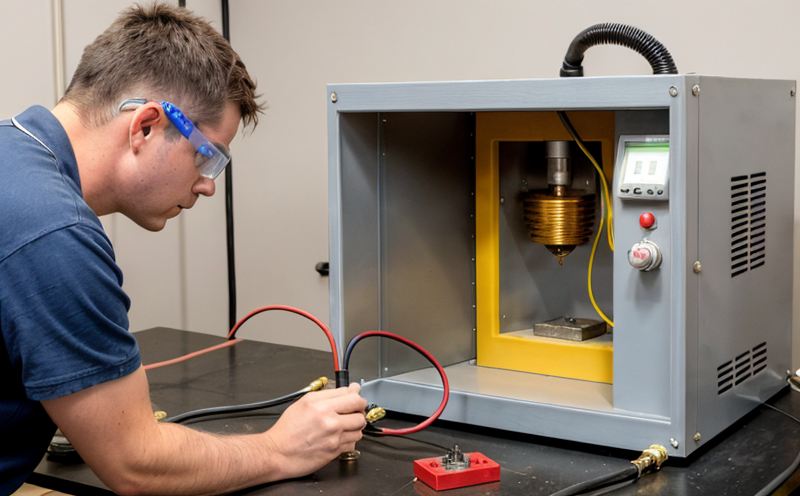ISO 6507 Vickers Hardness vs. Magnetic Permeability Testing
In the field of metallurgy and material testing, understanding both mechanical properties (such as hardness) and magnetic properties is critical for ensuring materials meet specific performance criteria in a wide range of applications.
The ISO 6507 Vickers Hardness vs. Magnetic Permeability Testing service provides comprehensive analysis to evaluate the relationship between the hardness and magnetic permeability of metallic materials, which can be crucial for quality control, research and development (R&D), and procurement processes within various industries.
This testing is particularly important in sectors where material integrity and performance are paramount. For instance, aerospace and defense require materials that not only withstand extreme conditions but also have predictable magnetic properties under varying stress levels. Automotive manufacturers need to ensure the durability of their components while assessing how these components might behave magnetically in different operational environments.
The Vickers hardness test measures the resistance of a material to indentation by applying a load through a diamond indenter, resulting in a pyramid-shaped indentation on the surface of the sample. This method provides an accurate measure of the material's hardness across various scales and is widely accepted for its precision and reproducibility.
Magnetic permeability testing assesses how much a material enhances or reduces magnetic fields passing through it. Materials with high magnetic permeability are more responsive to magnetic fields, while those with low permeability resist magnetization. This property is critical in applications involving electromagnetic devices such as transformers and sensors.
By combining these two tests, the service allows for a deeper understanding of materials' behavior under different physical conditions. For example, a material that demonstrates high hardness but low magnetic permeability might be suitable for structural components where resistance to wear is essential, while maintaining minimal interference with electromagnetic systems.
The testing process involves careful preparation of samples according to specific guidelines outlined in ISO 6507. This includes precise measurement and control of temperature and humidity to ensure accurate results. The Vickers hardness test requires the application of a specified load for a given duration, followed by the calculation of the hardness value based on indentation depth.
The magnetic permeability test typically involves passing an alternating current through a coil surrounding the sample and measuring the resulting magnetic field strength at various points around the sample. This helps determine how the material interacts with electromagnetic fields in practical applications.
Scope and Methodology
| Parameter | Description |
|---|---|
| Vickers Hardness Test | The Vickers hardness test measures the resistance of a material to indentation by applying a load through a diamond indenter, resulting in a pyramid-shaped indentation on the surface of the sample. |
| Magnetic Permeability Test | This involves passing an alternating current through a coil surrounding the sample and measuring the resulting magnetic field strength at various points around the sample. |
The testing process is conducted in accordance with ISO 6507, ensuring accuracy and reliability. The test results are reported as both Vickers hardness values (HV) and magnetic permeability readings, providing a comprehensive assessment of the material's properties.
International Acceptance and Recognition
- The ISO 6507 Vickers Hardness vs. Magnetic Permeability Testing service is recognized by major industries worldwide, including aerospace, automotive, electronics, and defense.
- Aerospace manufacturers rely on this testing to ensure the integrity of critical components that must withstand harsh environments while maintaining magnetic properties.
- Automotive companies use these tests for quality control, ensuring parts meet stringent durability standards without compromising their electromagnetic performance.
- Electronics firms leverage this service to develop and validate new materials used in sensitive devices where both mechanical strength and magnetic behavior are crucial.
Use Cases and Application Examples
| Application | Description |
|---|---|
| Aerospace Components | Evaluating the hardness and magnetic properties of critical components like turbine blades and structural parts. |
| Automotive Parts | Determining the suitability of materials for high-stress, high-magnetic environments in automotive systems. |
| Electronics Devices | Assessing materials used in sensitive electronic devices to ensure they meet electromagnetic compatibility (EMC) standards. |
This testing is essential for industries where material performance under diverse conditions directly impacts product reliability and safety. By providing this comprehensive service, we help our clients ensure that their materials not only meet current specifications but also perform reliably in the future.





